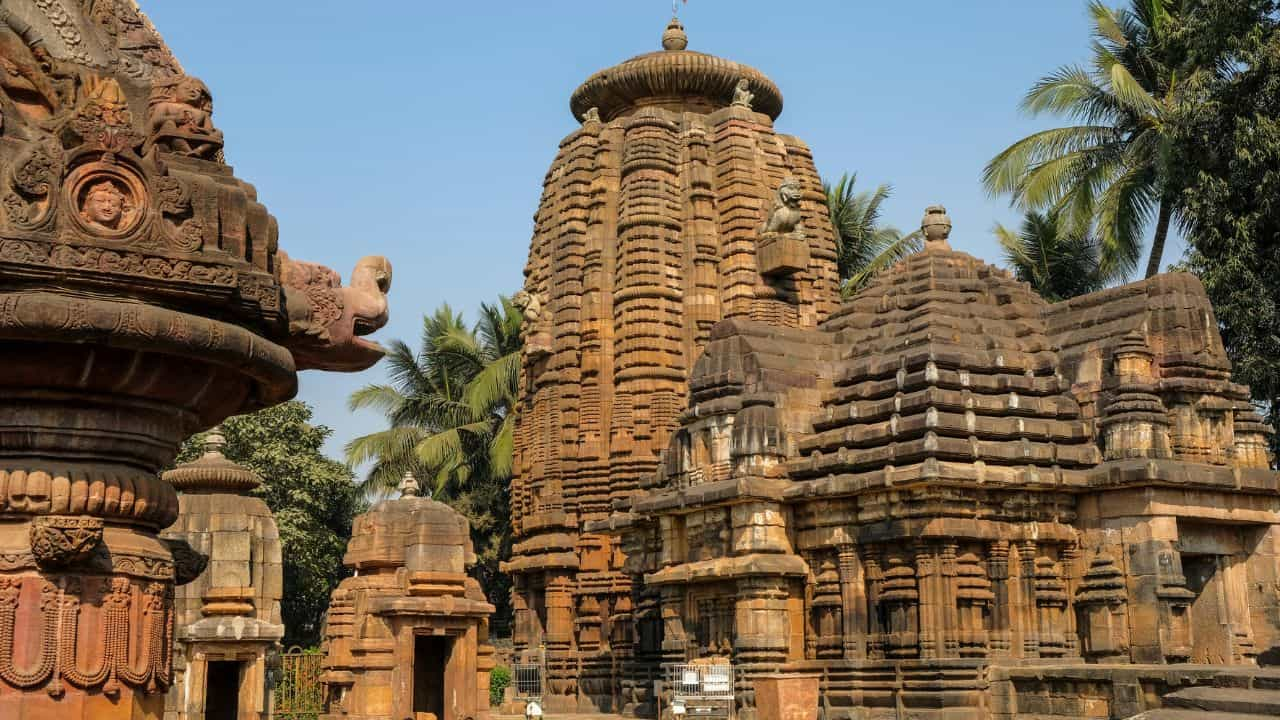On the serene coastline of the Bay of Bengal stands a monument of such breathtaking grandeur and artistic genius that it seems to defy the very limits of human creation. This is the Sun Temple of Konark, a UNESCO World Heritage Site and the absolute pinnacle of Kalinga architecture. It is not merely a temple; it is a colossal poem etched in stone, a monumental chariot built to carry the Sun God, Surya, on his celestial journey across the heavens. Even in its ruined state, the temple exudes an overwhelming power and a sublime beauty that has left visitors awestruck for centuries, earning the reverence of poets like Rabindranath Tagore, who declared, “Here the language of stone surpasses the language of man.”
Built in the 13th century by the great king Narasimhadeva I of the Eastern Ganga Dynasty, the temple was designed as a gigantic, cosmic chariot. It stands on twenty-four intricately carved stone wheels, each representing the sundials of the day. This magnificent chariot is pulled by seven powerful stone horses, representing the seven days of the week. The sheer ambition of this concept is staggering, but it is the execution that truly elevates Konark to a world wonder. Every inch of the temple’s surface is covered in exquisite, detailed carvings. The sculptures depict a vibrant panorama of 13th-century life: gods and goddesses, celestial musicians, graceful dancers, scenes of courtly life, royal processions, and, most famously, intricate and sensuous erotic art that celebrates life and procreation.
For centuries, the main tower, or deula, of the temple, which was said to have soared to over 200 feet, served as a vital navigational landmark for sailors on the Bay of Bengal, who called it the “Black Pagoda.” Why this main tower collapsed is a subject of intense debate, with theories ranging from structural defects to foreign invasion. All that remains today is the magnificent Audience Hall, or Jagamohana, with its tiered pyramidal roof, but even this surviving structure is enough to convey the temple’s original, unimaginable grandeur.
The name Konark is derived from Kona (corner) and Arka (sun), referring to its position in the “Arka-Kshetra,” a sacred zone dedicated to the Sun God. A visit to Konark is a journey into the heart of India’s artistic and scientific heritage. To witness the sunrise over the nearby Chandrabhaga Beach and then walk among the temple’s magnificent ruins is to feel a profound connection to the ancient astronomers, architects, and thousands of anonymous sculptors who dedicated their lives to creating this timeless masterpiece.
Key Attractions:
-
The Sun Temple: The primary and awe-inspiring attraction. The main surviving structure is the Jagamohana (Audience Hall), which itself is a colossal work of art. The highlights of the complex are:
-
The Twenty-Four Wheels: Each of the giant wheels at the base of the temple is a masterpiece of sculpture and science. They are not merely decorative; they function as accurate sundials. The intricate carvings on their spokes and hubs depict scenes of daily life and mythological figures.
-
The Seven Horses: The powerful, life-like sculptures of the seven horses at the entrance appear to be straining to pull the great chariot forward, creating a dynamic sense of movement.
-
The Erotic Sculptures: Similar to Khajuraho, Konark is famous for its intricate erotic carvings. These are not merely for titillation but are believed to represent the Tantric aspects of Hinduism and the celebration of fertility and life force (shakti).
-
The Guardian Lions and Elephants: The main entrance is flanked by monumental sculptures of lions crushing war elephants, symbolizing the victory of Dharma over pride.
-
ASI Archaeological Museum: Located just outside the main temple complex, this excellent museum houses many of the stunning sculptures and carved panels that have fallen from the temple over the centuries. It provides a chance to see the incredible detail and artistry of the stone carvings up close.
-
Chandrabhaga Beach: Located about 3 kilometers from the temple, this is a beautiful and serene beach with a long stretch of golden sand. It holds great spiritual significance, as it is believed to be the place where Samba, the son of Lord Krishna, was cured of leprosy after praying to the Sun God. It is a perfect spot to witness a spectacular sunrise before visiting the temple. The annual Chandrabhaga Mela is a major festival held here.
-
Konark Dance Festival: If you visit in early December, you will be treated to one of India’s most prestigious classical dance festivals. Held against the magnificent backdrop of the illuminated Sun Temple, the festival features performances by the country’s leading classical dancers, making for an unforgettable cultural experience.
-
Ramachandi Temple: A small but beautiful temple located at the confluence of the Kushabhadra River and the Bay of Bengal. Dedicated to the goddess Ramachandi, who is considered the presiding deity of the Konark region, it is a peaceful and scenic spot to visit.












